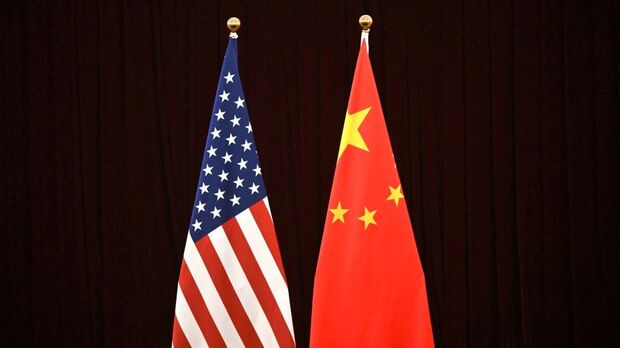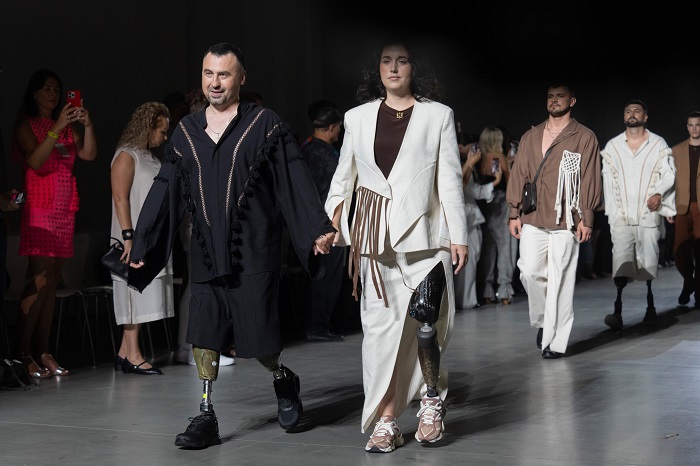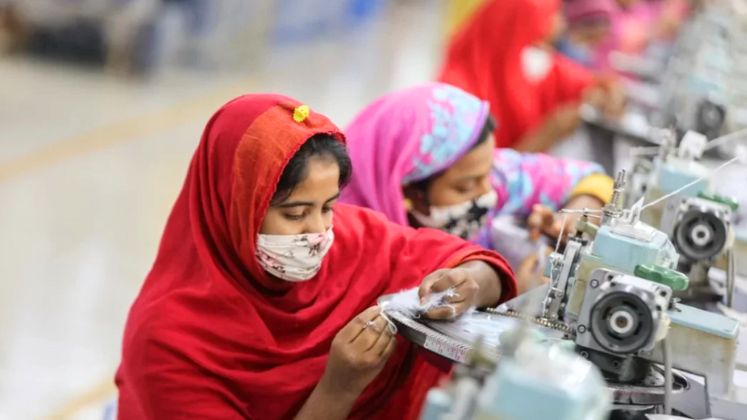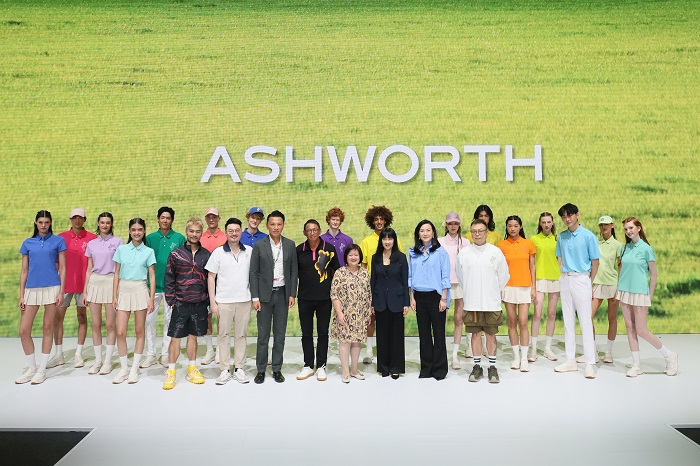FW
Pakistan wants to formulate an aggressive policy for export of readymade garments and for attaining maximum benefits under the GSP Plus status. The European Union granted duty free access to Pakistani made-ups under the Generalised System of Preference Plus status in January this year. Under this scheme Pakistan's textile products can be exported duty-free or on a preferential duty basis for the next tenyears.
Exporters want the government to relax import duties blocking access to raw materials, especially artificial fiber. They say this relaxation will enable them to diversify product lines so that they can take full advantage of the facility. They also want water and energy supplies to be improved so that an increase in demand through GAP Plus can be met.
Pakistan has effectively utilized only a handful of the 73 textile categories that have been given duty-free access. The country has weak domestic supplies of raw materials, except cotton, with high duties on inputs forcing the Pakistan garment industry to produce low-value-added garments. The industry feels the removal of duties of up to 11 per cent on clothing exports would allow the country’s products to be more competitive in the EU market.
The local garment industry comprises small to medium-sized units. Such manufacturers are unable to import the raw material required to diversify their product lines because of their small scale.
The England-based International Cotton Association (ICA) used to expel members that deal with companies that are blacklisted for defaulting on contracts.But now mediation services will be introduced. This will help resolve disputes over reneged contracts. Mediation is seen as a speedier tool to resolve disputes in addition to the current methods of negotiation and arbitration.
Mills that agreed to buy raw cotton from trading houses when prices were high then refused to honor those deals when prices plunged. The problem has become common in the industry in periods of high price volatility.Some defaulting companies had approached ICA, requesting to be removed from the list and mediation was thought of as a suitable way to achieve that.
If both sides agree to mediation, ICA can provide a professional mediator to help resolve a dispute. The two parties share the costs.ICA is the first commodities association to offer mediation services.
The process is quicker than arbitration as most mediations usually take only one day. It provides a forum for the two parties to resolve their disputes. The beauty of mediation is that it is a win-win situation as both parties have to agree, and both parties want to find a solution that they are happy with. With arbitration, one party loses at the end.
www.ica-ltd.org/
The share of readymade garments in Bangladesh's export basket currently stands at around 80 per cent.The country provides satisfactory levels of quality, especially in value and entry-level mid-market products. Competitive price level is clearly the prime advantage of Bangladeshi garment products.
With around 5000 readymade garment factories employing about 3.6 million workers out of a workforce of over 75 million, Bangladesh is clearly ahead of comparable suppliers from southeast Asia.In the medium term, Bangladesh looks set to be the sourcing country of choice for European and US buyers. During 1995-2010, Bangladesh’s share of apparel imports into Europe and the USA more than doubled.
European and US buyers will continue to increase their sourcing activities in Bangladesh in the mediumterm. In addition, new buying markets in other regions are increasingly becoming important as sourcing customers for Bangladesh.
Mid-market brands, which generate around 13 per cent of their sourcing value in Bangladesh today, plan to raise their share to 20 to 25 per cent in the medium term. This growth will be driven by not only an increase in the volume of current product categories but also by broadening the sourcing strategy to more complex, more fashionable or increasingly sophisticated items. These imply that the value market will be the key volume contributor, while the midmarket will demonstrate a more dynamic growth.
Germany is fast catching up with the US as the leading destination of Bangladesh's garment products on the back of higher demand and duty benefits.Last fiscal year, Bangladesh’s garment exports to Germany were up 19.02 percent year-on-year. In contrast, garment exports to the US showed an increase of just 3 percent over fiscal 2012-2013.
The reason for the spike in ordersis that German retailers are diverting their custom from China, where production costs are escalating.Furthermore Bangladesh’s exporters enjoy duty-free access to the European Union -- of which Germany is a part -- owing to the Generalised System of Preferences scheme introduced in 1971, a privilege not enjoyed in the American market.
In the absence of any duty benefits, garment exporters pay 15.61 percent duty upon entry to the US market.Around 828 million dollars was paid to the US customs last year and 3.41 billion dollars over the last five years.
Bangladesh however expects orders from the US to rise as well in the coming days, given the clean chit given to the majority of the factories following inspections. Retailers are coming with higher volume of work orders.Garment exports to the US are tipped to pick up with the rebounding American economy.
The United States and Brazil have closed a 12-year-old fight over US cotton subsidieswith the US paying 300 million dollars to the Brazilian Cotton Institute to settle the trade battle.Brazil has agreed to end its World Trade Organization case against the world’s largest cotton exporter and to not lodge any new actions as long as current US policies remain in place.
The US, meanwhile, must hold to the conditions under its current farm support policies, which Brazil, the world’s fourthlargest exporter, took aim at first in 2002 due to US subsidies ruled in violation of WTO rules.
That includes keeping limitations on how Washington’s export guarantees are provided to cotton exporters, so as not to give them unfair advantage in the global marketplace.
Thisagreement brings to a close a matter which put hundreds of millions of dollars in US exports at risk.
The WTO ruled in Brazil’s favor in 2005 and again in 2008 in the case, allowing the country to impose countermeasures against US trade.That had raised worries about US market access and intellectual property protection in Brazil, as well as the United States’ 28 percent share of the global cotton trade.
What led to the deal was an interim agreement in 2010 for Brazil not to take retaliatory action and then the passage of a new farm bill by the US Congress in February this year that tightened US cotton support programs and export guarantee programs.
Punjab province in Pakistan has beaten all previous records and produced 32.35 per cent more cotton than preceding years. However Sindh produced 1.60 per cent less cotton this year.
A total of 763 ginning factories are operational in these two provinces.
Cotton trading has remained firm amid strong physical price and higher cotton prices. Since the textile mills have increased the buying of cotton to meet the demand of the European market after attaining the status of GSP Plus, the rates are stable.
Ginneries received 1,384,533 bales during the fortnight of September 16 to October 1. Unsold stock is 663,966 bales which is more than last year when it reached 587,883 bales. Ginners were expecting better prices for their lint but prices have fallen way beyond their expectations.
The country has also been losing some 10 to 15 per cent of the value of its cotton due to poor quality. Improper picking, adulteration of cotton, missed grades and seed varieties and improper packing, storage and means of transportation are responsible for the poor quality of the fiber.
The option of increasing area under cultivation cannot be exercised because of the lack of irrigation water. The two major cotton growing provinces, Punjab and Sindh, are already at their maximum level.
The Belgian textile and fashion associations Creamoda and Fedustria together with European Apparel and Textile Confederation (Euratex) are organising the 3rd edition of Euratex Convention on November 18, 2014 at Husa President Park Hotel in Brussels. The annual event will bring together experts to exchange their views on the future of clothing and textiles in Europe.
The economic situation in Europe has indispensable influence on the private consumption of textile and fashion goods. The opening panel of the convention, devoted to the perspectives of economic development of Europe and the world, will examine the megatrends on consumer behavior. The prominent speakers will discuss new horizons open for the European textile and clothing industry through the innovation and modernisation. The afternoon session of the event will be dedicated to the overview of technology developments affecting the market of personal protective equipment (PPE).
The convention participants can also take a closer look at the EU policies and regulatory changes influencing this sector. The peculiarities of public procurement of personal protective equipment will be discussed during the conference that will continue the next day.
Every year Euratex Convention brings together representatives of industry, associations, government agencies, local ministries and academics. This is a unique platform for an open and progressive debate on the current challenges and future opportunities of the textile and fashion industry in Europe.
www.euratex.eu
International cotton prices have continued falling in the first two months of the new season. Given the predicted 1.8 million tons of surplus cotton production and changes in China’s cotton policy, prices are unlikely to rise to the levels seen in the last two seasons.
With the fall in prices, world cotton consumption is forecast to rise nearly four per cent, with more of the consumption occurring in the latter half of the season.While cotton’s absolute volume of consumption is likely to grow, it will probably not gain back much of its market share as it takes time for the market to adjust.
World cotton production is forecast up one per cent. China’s overall production is projected at 6.4 million tons in 2014-2015. India expanded cotton area by five per cent as the delayed monsoon encouraged farmers to switch to cotton, and with yield closer to the three-year average, production is likely to reach 6.6 million tons, making India the world’s largest cotton producer by 2014-2015.
Harvested cotton area in the United States could reach 3.9 million hectares as plentiful rainfall reduces the abandonment rate this season.
Though some mills still hold additional quota for 2014, China’s imports are forecast to fall 36 per cent and world imports would decline 11 percent. Imports by the rest of the world, notably southeast Asia, are projected to increase two per cent.
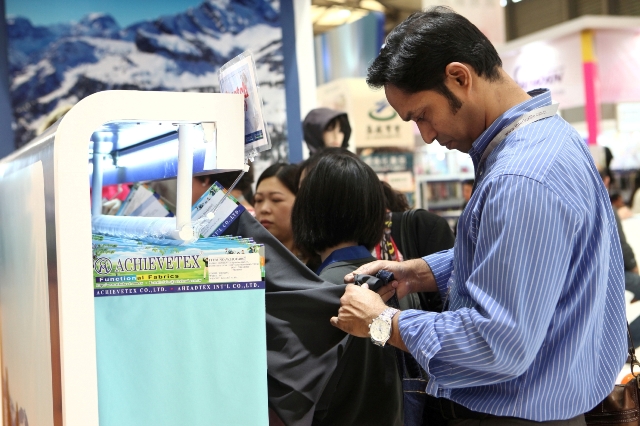 Autumn 2014 edition of Intertextile Shanghai Apparel Fabrics will be held at Shanghai New International Expo Centre in Shanghai, China, from October 20 to 23, 2014. Exhibition will see a newly designed Beyond Denim hall with increased capacity to meet the domestic demand. Accessories halls will witness a wide range of fashionable accessories and functional fabrics are another highlight of the fair.
Autumn 2014 edition of Intertextile Shanghai Apparel Fabrics will be held at Shanghai New International Expo Centre in Shanghai, China, from October 20 to 23, 2014. Exhibition will see a newly designed Beyond Denim hall with increased capacity to meet the domestic demand. Accessories halls will witness a wide range of fashionable accessories and functional fabrics are another highlight of the fair.
Beyond Denim gets bigger & better
This year’s fair will boast 15 halls, with over 3,800 international and domestic exhibitors featured across more than 170,000 sq. mtr.of space.Following the success of last year’s denim zone, the newly designed and enlarged Beyond Denim hall will feature around 150 exhibitors from six countries and regions. This year’s denim area expands to an entire hall witnessing a 25 per cent increase in exhibition space compared to last year.
Wide range of fashionable accessories
In addition to denim products, accessories and functional fabrics are also a highlighted product category this year. Over 550 domestic and international accessories suppliers will feature in two halls (E6 – E7), with both garment and fashion accessories on display. Buyers can find a wide range of new accessories at the fair including a selection of zippers, buttons, lace & embroidery, linings / interlinings, threads, labels, hangtags, tape, appliqués / sequins / beads / rhinestones and fashion accessories. An Accessories Trend Forum will be located in hall E7 next to the overseas accessories zone displaying a variety of products reflecting the upcoming trends.
Esquel Enterprises is a well-established exhibitor from Hong Kong. Buttons, embroidered patches, hangers, labels, tape, polybags, eco-friendly trims and packaging are their featured products at the upcoming fair. They will offer a wide selection of eco- friendly trims. Their one-stop branding and packaging solutions provide buyers with flexible and effective solutions for the low-end,mid-range and high-end / luxury markets.
patches, hangers, labels, tape, polybags, eco-friendly trims and packaging are their featured products at the upcoming fair. They will offer a wide selection of eco- friendly trims. Their one-stop branding and packaging solutions provide buyers with flexible and effective solutions for the low-end,mid-range and high-end / luxury markets.
Functional fabrics in focus
Mirroring current trends in the textiles industry, functional fabrics and products are the other focus areas at the fair. The exhibitors taking part are looking to benefit from the increase in demand in China for functional fabrics and see the fair as the best way to do this. Various kinds of functional fabrics will be showcased, with properties such as thermo-regulation, moisture wicking, increased durability, elasticity, windproof and more. In the domestic market in particular, functional fabrics for sportswear, ladieswear and menswear are in high demand.
One of the exhibitors is Toyobo from Japan, which will highlight new types of CERAM (far infrared radiation) at the fair. CERAM has been sold in the Chinese market for decades and is well-known to many customers. Their showcased products contain new functions and focus on cleanliness and safety. Retailers and sports-related companies are the target buyers for this product.
Directions Trend Forum
Meanwhile, the Intertextile Directions Trend Forum will once again showcase the trends for autumn / winter 2015-16 in hall W1, and this year features special labelling for eco and functional fabrics and products to help buyers more easily identify these items.Running concurrently with this fair are two other events: Yarn Expo Autumn and PH Value, which are located within the same venue as Intertextile Shanghai Apparel Fabrics and take place over three days from October 20 to 22.
Intertextile Shanghai Apparel Fabrics is co-organised by MesseFrankfurt (HK); the Sub-Council of Textile Industry, CCPIT; and the China Textile Information Centre.
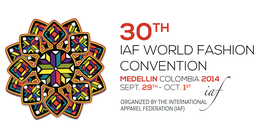 The 30th IAF World Fashion Convention that ended on a high note last week welcomed over 300 delegates from 20 countries in Medellin, Colombia, first time in South America. The discussions at the event focused on ‘Understanding the challenges of the fashion system’.
The 30th IAF World Fashion Convention that ended on a high note last week welcomed over 300 delegates from 20 countries in Medellin, Colombia, first time in South America. The discussions at the event focused on ‘Understanding the challenges of the fashion system’.
Day one takes up the denim cause
Each of the seven speakers who spoke on the first day, moderated by Eduardo Braun, gave his or her vision on the future of the industry. While Emiliano Duch, Lead Specialist, Trade & Competitiveness from the World Bank advised governments to modernize their support of the fashion industry, from investing in big industrial parks, which only fosters the lowest paying jobs, to the support of local brands and retail. Claudio Chiaromonte, Executive Vice President and Managing Director for The Walt Disney Company, Latin America showed the audience how big companies have perfected the art of delivering to consumers anytime, anyplace, through any format, by any payment. Horacio Broggi, Director of Desigual Latin showed some secrets of the success of the phenomenal growth of Desigual, from eight to 800 million euros (Rs 618 to Rs 6,180 crores) in 10-years-time.
The highlight of the day was Adriano Goldschmied, also called the godfather of jeans, who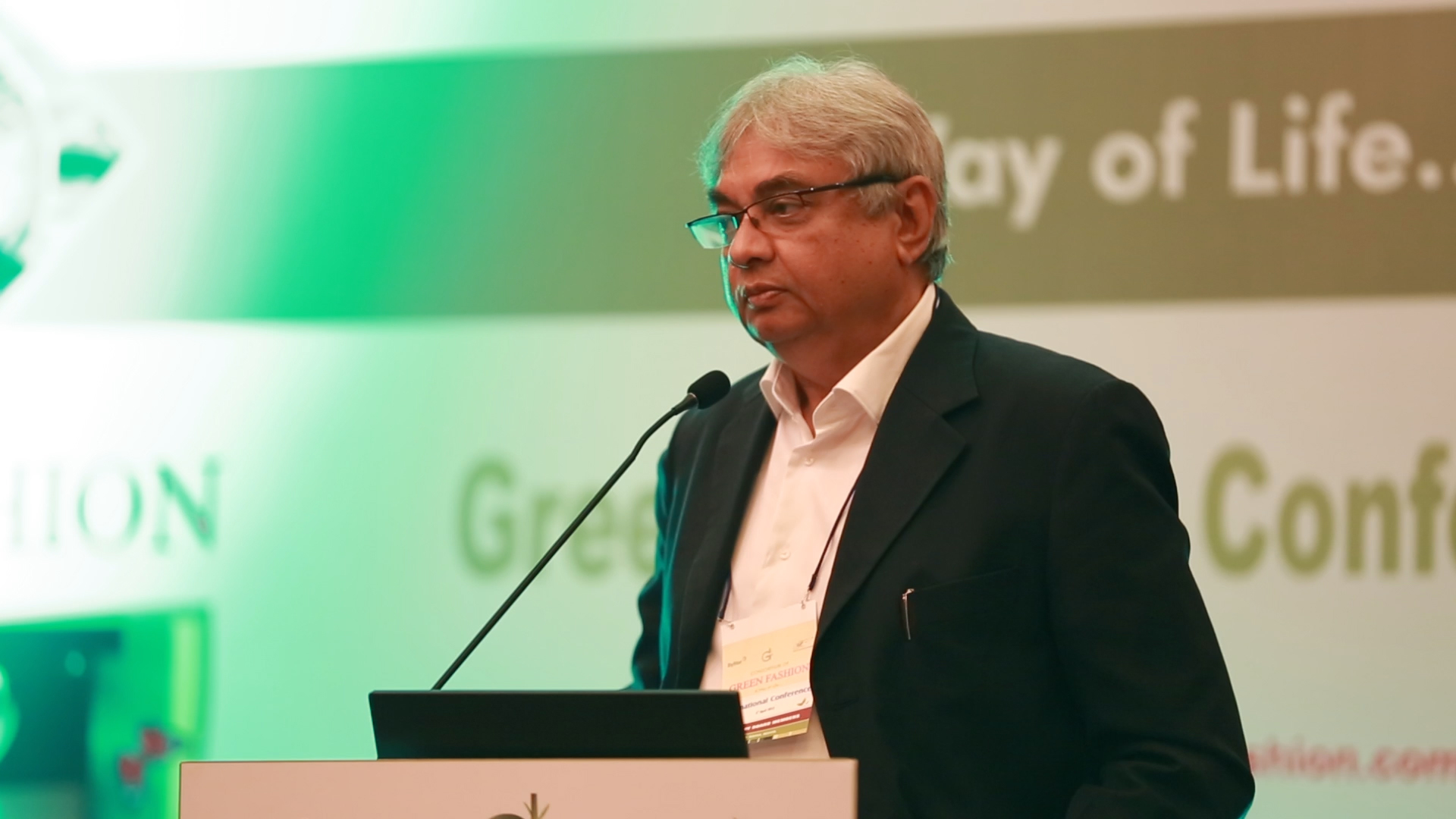 took the delegates on a journey of the development of the premium jeans segment by way of his
took the delegates on a journey of the development of the premium jeans segment by way of his own personal pictures. The pictures showed how the right people came together at the right time and created products that were inspired by their own lifestyles. Goldschmied went from the past to the future where technical innovation will bring jeans to a new level of comfort.
own personal pictures. The pictures showed how the right people came together at the right time and created products that were inspired by their own lifestyles. Goldschmied went from the past to the future where technical innovation will bring jeans to a new level of comfort.
Mariette Hoitink, chairwoman of Amsterdam based House of Denim continued with the jeans case. She showed the delegates how city, big brands, local entrepreneurs and foreign investors work together to create a denim hub in Amsterdam. But it was clear that this example, combining denim specific schooling, research and networking can be replicated in other places as well.
Fernando Pimentel, the Director of the Brazilian Apparel Association Abit stressed the importance of intra Latin American trade.
And finally, Ed Gribbin President of Alvanon plead for a radical change in the industry which is facing below 40 per cent full price sell through on the retail end. Investments in 3D digital sampling, PLM are necessary as is a shift in focus to a more engineering oriented design of clothing, focusing not only on how it looks, but also on how it works.
Rahul Mehta succeeds as IAF President
In the general assembly of the International Apparel Federation, held during the World Fashion Convention, Rahul Mehta was elected as new IAF President for the coming two years. He succeeds Harry van Dalfsen who has been IAF’s leader in the past four years. Rahul Mehta is President of the Clothing Manufacturers Association of India (CMAI) representing this association in IAF since many years.
The general assembly also agreed with other changes in IAF’s management. Claudio Marenzi, President of the Italian Apparel and Textile Association Systema Moda Italia (SMI) was elected Vice-President of IAF. IAF’s Secretary-General Han Bekke will step down end of this year after holding this position since eight years. He was elected as new member of the IAF board in which he will take the position as treasurer from Hasan Arat who stepped down as member of the board. New Secretary-General of IAF from January 1, 2015 onwards will be Matthijs Crietee, who is currently Deputy Secretary-General.
In his opening speech, outgoing IAF President Harry van Dalfsen showed his optimism about the global fashion industry. Although it faces great challenges, he said, it is full of great examples of companies finding new ways to entice customers, add new value, expand markets and improve its hugely complex supply chain.
He sees as a positive sign of the times ahead and the growing power of local brands in emerging markets. According to him, strong local brands inspire international brands to adapt their global style to local circumstances and international brands force local brands to learn more quickly to compete. On the supply side, he stated that he believes, positive changes in the apparel industry will be driven more in the coming decade by investments in the manufacturing part of the industry. He opined that a new, more balanced relation between brands, retailers and manufacturers is needed to make joint decisions on investments, improving productivity, working conditions and reducing costs and environmental footprint.
Iafnet.eu



